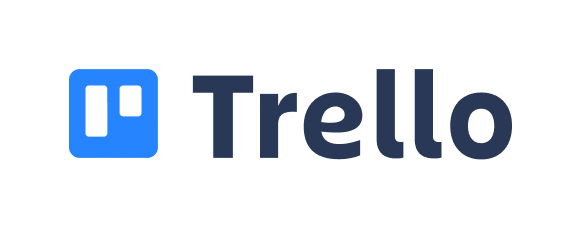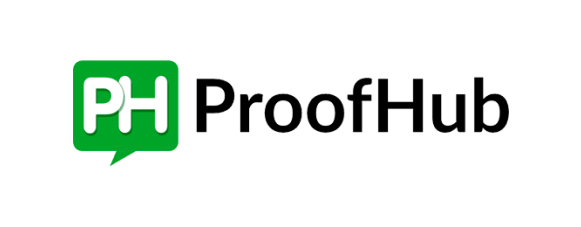-
Introduction
-
What is Project Planning Software?
-
Functionalities of a Project Planning Software
-
Why Is Project Planning Software Critical for Businesses?
-
What is the Difference Between Project Planning Software and Project Management Software?
-
Top 10 Project Planning and Management Software of 2023
-
Conclusion
Introduction
It is a well known fact that lack of an improper Project Planning strategy can often cost businesses a huge amount of money. Project Planning Strategy refers to having a planned approach to different phases and tasks of a project such as resourcing, buying, budgeting, planning, time tracking, data collections and delivery. More and more businesses are transforming their project management approach for the better. They are ditching the traditional agile and Waterfall project management methodologies being implemented individually. Instead, companies are now combining the best attributes of both and are working with hybrid methods to get maximum output. Another asset to a developer or a company can be using the right Project Planning Software. Let us study in detail what Project Planning Software entails, and which one you should use.
What is Project Planning Software?
A Project Planning Software refers to a type of software often used for Project planning, scheduling, resource planning and allocation. Project managers, stakeholders, developers and users benefit greatly and directly from using such software. This is because an efficient project planning software facilitates each phase of the project planning process. From controlling expenditures and budgeting to quality management and documentation, a Project Planning Software takes care of it all. It basically doubles up as an automated administration system.
Functionalities of a Project Planning Software
Here are some common functionalities a project planning software is used for:
Task Management: An efficient Project Planning Software simplifies the complex processes by breaking them into smaller tasks, deciding deadlines and priorities and tracking progress.
Gantt Charts: In a project schedule, Gantt Charts are visual data that shows all details about a project. Every Project Planning Software comes with Gantt Charts functionality to provide a clear overview of progress and critical workflows.
Resource Allocation: These tools allow project managers to allocate resources such as team members, equipment, and materials to specific tasks. Resource management features help ensure that resources are utilized efficiently and conflicts are minimized.
Clear Communication and effective collaboration:Tools for collaboration and communication are provided by project planning software to support teamwork. Team members may interact, exchange updates, and work together on project-related information thanks to features like real-time chat, document sharing, and discussion boards.
Time Tracking: Project Planning Software also comes inbuilt with time tracking features to monitor the time spent on different tasks and projects. This helps in maintaining productivity, efficiency, analyzing resource allocation and generating precise reports.
Why Is Project Planning Software Critical for Businesses?
Project Planning Software is critical for businesses for several reasons. Few of them are:
Better Organization: Businesses can better manage their complex tasks and organize them down to human size. This facilitates easy delegation of duties and deadlines in businesses.
Collaboration and Communication: A Project Planning Software enhances communication among team members and encourages collaboration. It becomes a centralized platform for everybody involved in the project to share project information, access, data, updates etc.
Resource Management: For any business, optimum utilization of resources is a must and Project Planning Software ensures just that. It helps identify misuse and misdirected application of resources and rectifies it. It also balances workloads amongst team members so that the process is carried out in the most effective manner.
Risk Management: Every project is susceptible to risks which can be extremely damaging to the output of the project. A Project Planning Software helps mitigate these risks, identify threats early on, assign risk owners and much more.
Reporting and Analytics: Software like Project Planning Software equips businesses with comprehensive reports and accurate analytics for smoother workflows and better outputs. The software helps develop graphic and visual reports, graphs and charts that provide critical insights on the project and its key performance indicators(KPIs). These analytics are a boon for businesses when it comes to making informed business decisions, identifying avenues for improvements and much more.
Time Management: Time is invaluable for businesses, and project planning software helps businesses achieve maximum efficiency. Teams often use it to set up project timelines, specify task dependencies, and monitor development before deadlines. Businesses can prioritize work, locate bottlenecks, and make modifications to meet project due dates by being able to visualize timelines and identify important pathways.
What is the Difference Between Project Planning Software and Project Management Software?
Project Planning Software primarily focuses on the initial stages of a project which covers the organization and planning part. From defining project objectives, dividing workflows into smaller tasks, delegating resources and defining timelines, The Project Planning Software takes care of it all. With the help of task schedules, Gantt charts, resource allocation and scheduling tools one can conveniently ensure effective Project Management.
On the other hand, a Project Management software maps the entire lifecycle of a project, including planning, execution, monitoring and control. Unlike Project Planning Software, Project Management system covers all bases and phases of a project workflow and is not limited to a single phase as such. It actively manages all project’s activity, from start till end, and takes care of multitude of tasks throughout the project lifecycle.
This marks the main difference between a project planning software and a project management software. However, project planning software is often considered a subset of project management software and is also marketed as the same.
Top 10 Project Planning and Management Software of 2023
1. Asana:

A widely used project management and Planning tool, Asana is preferred by most organizations for its robust planning, efficient task management, collaboration tools, and customizable workflows.
2. Trello

Trello, yet another great tool for project planning and management, stands out for its simplicity and ease of use. Trello uses boards, lists and flash cards to help users track all phases of projects and plan accordingly .
Pros of using Trello:
- Manageable tasks
- Intuitive Drag-and-drop work area
- Flexible Multi-board workspaces
- Enhances project visualization and organization
Cons of using Trello:
- Limited levels of task hierarchy.
- Limitations on reporting and privacy settings.
- Free version limits attachment size and integrations.
3. Microsoft Project

A comprehensive project management software, Microsoft Project is a crowd favorite as it allows users to organize, schedule, and track projects, all in one place. Its advanced features such as Gantt charts, accurate resources allocation, and high end analytics sets it apart from its peers.
Pros of using Microsoft Project
- Add-on Microsoft 365 Integration
- Project Planning
- Flexible and versatile
- Delivers on Scalability
Cons of MS project
- Training time
- Cost Constraints
- Missing In-app Collaboration
4. Wrike

Wrike is a cloud-based project management software that offers robust planning and collaboration features. It includes features like Gantt charts, task dependencies, document sharing, and real-time collaboration.
Pros Of Wrike include:
- Robust Application with Kanban boards and Gantt Charts
- Free Version for up to 5 users
- Regular updates via dashboards
Cons of Wrike include:
- Consistent Speed issues
- UI lacks clarity
- Expensive compared to similar tools in the market
5. Workzone

A web-based tool for project management and collaboration, Workzone is an interesting tool for its wide array of features which others fail to deliver. It’s project dashboard is one of a kind which provides a platform for team communication along with an automated to-do list that can be sent to each user.
Pros of using WorkZone:
- Professional and versatile tool
- Comes with numerous advantageous features such as time tracking, resource planning and client management.
- Enhanced workflow management
Cons of WorkZone include:
- Its interface and usability needs some improvement
- Slightly difficult to learn and adopt
- Small delays while updating tasks
6. ProofHub

Proof hub is an online project management and collaboration platform that includes, among other things, built-in group chat, rapid project discussions, workflows and boards, and project reports. Uploading and sharing of documents (such Excel and Powerpoint) is supported, and there is a built-in online proofreading facility to help with image and document inspection.
Pros of using Proofhub:
- API access and easy integration with third-party apps
- Convenient Chat features
- Both iOS and Android capable
Cons:
- Mobile version is inferior compared to desktop version
- Customer support can be improved
7. MeisterTask

Meister Task is a project planning and management tool known to provide teams with an attractive, adaptable environment that is simple to use for work management. MeisterTask is feasible especially for vendors for managing everything from software sprints to editorial calendars since its project boards adapt to the workflow of each team.
Pros of using MeisterTask:
- Easy assignment of tasks
- Easy use of groups features and delegation
- Visual representation of the task status
Cons of using MeisterTask:
- Slow product updates
- Calendar and Timeline views were not very useful
8. Jira

Agile teams’ favorite, Jira is a software development tool that supports every agile methodology be it kanban, scrum or the one designed by the team itself. One added advantage of using Jira Software is that it allows its users to customize their workflows, permissions, etc according to their requirements.
Pros of using Jira
- Detailed work visualization using Kanban boards
- Work-in-progress limit increases efficiency
- Bugs, issues can be resolved conveniently
Cons of Jira:
- Some aspects are not user-friendly
- Difficult and complex to configure.
- Lack communities
9. Monday.com

Monday.com is an open platform designed for users to create tools themselves with the help of building blocks such as Apps and integrations, allowing teams to customize their work solutions. The tool can be used for a variety of functions, from creating an efficient CRM or streamlining process pipeline and building a project management tracker.
Pros of Monday.co
- Enhanced Organization (groups, items, subitems, etc.)
- Creative aesthetic and designs
- Efficient task management
Cons of Monday.co
- Slow automation
10. TeamGantt

As the name suggests, the tool TeamGantt is a project management and project planning tool solution built to provide users with Gantt chart capabilities. It does so via online deployment.
Pros of Teamgantt :
- Easily manages a project schedule and task dependencies
- Manage resources capacity on projects
- Simple planning reports
Cons
- Task Assignment matrix can be better.
Conclusion
With so many options available in the market, it is important to know which tool is best suited for your project. Selection of tools requires expert knowledge and an in depth study of tools functionalities. OpenXcell is a software development company which also provides consultation services. Hire dedicated professionals to answer all your queries and get the best expert advice on software development and its processes.









